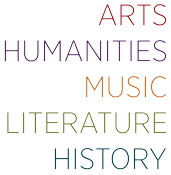Details
When:
No class on March 9
Where: Resurrection Lutheran Church
Cost: $135.00 for 5 session(s)
Type: In Person
Category:
Instructor: William A. Fry , has frequently given lectures on Emily Dickinson at her homestead and garden in Amherst, Massachusetts as well as on Walt Whitman at his home and gravesite in Camden, N.J.
William A. Fry
Walt Whitman and Emily Dickinson
Also see Tucson Session
During the 19th century, American poets, like those of Europe, were writing in traditional verse forms and the poems were nearly always in rhymed verse. We all remember memorizing those rhythmical lines from Longfellow and Poe. Actually, Emerson once called Poe “the jingle man” after reading The Raven, The Bells, and Annabel Lee. Then, Walt Whitman and Emily Dickinson arrived on the American poetic scene and became beacons of change and experimentation. Both received criticism for their poetry and were totally misunderstood for their unorthodox styles. Poetry scholars today realize that both Whitman and Dickinson were challenging the norms and greatly influenced the movements in poetry following World War I such as Modernism, Imagism and beyond.
Walt Whitman (1819-1892) began his career in poetry in writing verse that was typical of the early part of the 19th century; however, in 1855 he published his first edition of Leaves of Grass. That book and later editions of it changed American poetry (and world poetry) forever. He created free verse which had no rhyme and no specific form. His lines of poetry were of vastly different lengths; his poems didn’t look like poems on the page. He made use of long lists which he called catalogs, phrases celebrating the unique character of the American people, democracy, and the beauty of the landscape. He also was the first to celebrate the human body and sexuality – giving graphic descriptions of the parts of the female and male bodies. He described not only heterosexual love, but also homosexual love. He was also the first poet to honor the great diversity of the American people in gender, race, ethnicity, religion, and sexual orientation. There are many other inventive accomplishments to be found in Whitman’s numerous editions of his Leaves of Grass, an American classic that has changed poetry for the 20th and 21st centuries.
Emily Dickinson (1830-1886) wrote over 1,775 poems but only published eleven during her lifetime. But today she is one of the most celebrated American poets. Who has not read I’m Nobody, Some Keep the Sabbath, or A Narrow Fellow in the Grass? Emily, too, was breaking new ground in creating new types of rhymes which she called “sight rhymes” (eye rhyme) and “half rhymes” (slant rhyme). She experimented with punctuation by eliminating most commas and periods and making significant use of the dash to show her breaks in thought and to allow her readers to fill in the missing words. Another experiment of hers was the unorthodox use of capitalization in unusual places to show emphasis. Dickinson was the forerunner of the confessional poets of the 1950’s-1970’s: Sylvia Plath, Anne Sexton, Adrienne Rich. She wrote of her inner-most feelings, passions, torments (“I had a terror I could tell to none.”). She was also a forerunner of the 20th century modernist poets as her poems deal with very complex themes such as her questioning the existence of a benevolent God or anguishing over her fears of life and an afterlife. Dickinson gave American literature a body of poetry that was unfettered by time or fashion and became the idol and inspiration for many poets who followed her.
Register for Pioneers of Modern American Poetry – Oro Valley Session
Online registration has been closed for this class. Please call (520) 777-5817 for information.
